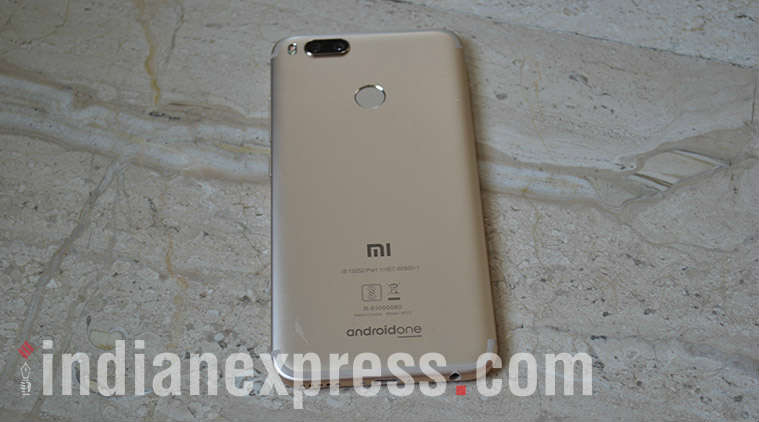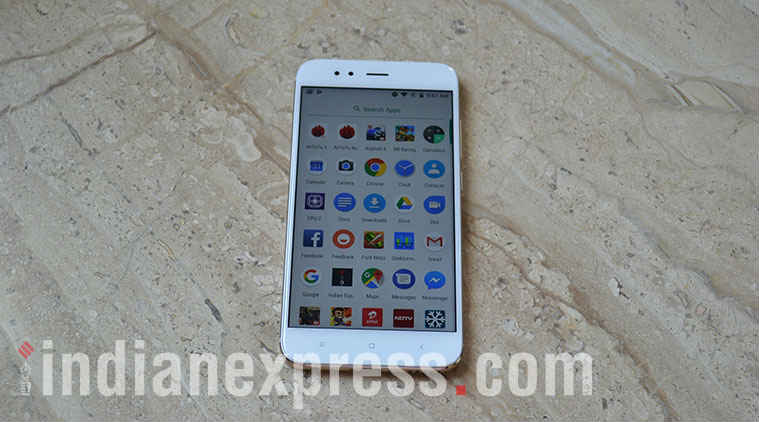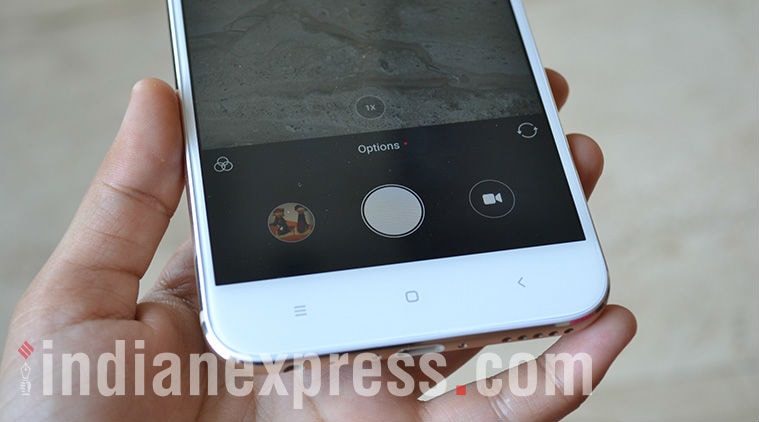Xiaomi Mi A1 first impressions: Android One returns but at a price of Rs 14,999
Android One, the much-hyped project that Google launched from India in 2014, is back. This time in a new avataar for the Indian market: Xiaomi Mi A1. So how does the Xiaomi Mi A1 fare? Will this help revive the Android One brand in the mid-range segment? Here’s our first impressions.
 Xiaomi Mi A1 first impressions: In terms of design, Mi A1 is similar to other Xiaomi smartphones you might have seen in the past, with all glass on the front and metal chassis.
Xiaomi Mi A1 first impressions: In terms of design, Mi A1 is similar to other Xiaomi smartphones you might have seen in the past, with all glass on the front and metal chassis.
Android One, the much-hyped project that Google launched from India in 2014, is back. This time in a new form and avatar for the Indian market: Xiaomi Mi A1. For those who remember, Google Android One phones were launched in India with much fanfare in 2014 when Sundar Pichai was head of both Chrome and Android. Micromax, Karbonn and Spice were the first three partners, offering smartphones with the same specifications and pure Android OS as the highlight.
But Android One was never the success it had hoped to be, at least in the Indian market. Now Google is making a comeback with Xiaomi. Given that the Chinese player is currently the number two smartphone vendor in the Indian market, picking Xiaomi as the partner shouldn’t come as a surprise. Xiaomi does have a dedicated fan base in India, and its Redmi phones have boosted sales for the company. But the Mi A1 offers an entirely different proposition: a Xiaomi phone that isn’t all Xiaomi.
We’ve had some time with the device ahead of its launch. So how does the Xiaomi Mi A1 fare? Will this help revive the Android One brand in the mid-range segment? Here’s our first impression.
Xiaomi Mi A1: Design, Display
Xiaomi Mi A1 will be compared to the Mi 5X, as the specifications are pretty much the same. Mi 5X was the mid-range dual-rear camera smartphone that Xiaomi launched in China, but this is not the same phone coming to India, insists the company. Mi 5X sports a similar design and specification, though of course that comes with MIUI, something not present on the Mi A1.
In terms of design, Mi A1 is similar to other Xiaomi smartphones you might have seen in the past, with all glass on the front and metal chassis. The dual rear camera setup is horizontal, and there’s a circular fingerprint scanner at the back. The back also has the Mi logo and below that the Android One logo. The Mi A1 uses a Type-C USB charger with the port situated at the bottom of the phone, next to this is a solitary speaker grille and on the other side is the headphone jack.
Must Read: Google’s Android One is back, but catering to a different price range and sensibilities
Mi A1 sports a more muted antenna band design at the back, though on the golden colour version of the phone, these aren’t exactly hidden and run above the camera on the top and are just below the Android One logo on the bottom. Xiaomi has opted for capacitive buttons, which light up when in use.
 Xiaomi Mi A1 sports a more muted antenna band design at the back, though on the golden colour version of the phone, these aren’t exactly hidden and run above the camera on the top and are just below the Android One logo on the bottom.
Xiaomi Mi A1 sports a more muted antenna band design at the back, though on the golden colour version of the phone, these aren’t exactly hidden and run above the camera on the top and are just below the Android One logo on the bottom.
Overall Mi A1 feels like a lot of other phones from the company, and from a design perspective this isn’t so radical. Thanks to the flood of dual-rear camera smartphones, you can’t help but feel this is something you’ve already experienced or seen somewhere. The 5.5-inch full HD display from Xiaomi delivers well so far, and is good enough for daily social media and YouTube video consumption.
Xiaomi Mi A1 Processor, Storage, Battery
Mi A1 only comes with one variant: 4GB RAM and 64GB storage. The phone runs the Qualcomm Snapdragon 625 processor, which is the same as the Redmi Note 4. We’ll have to see how the battery fares in our full review, but this one does charge quickly. It went from 19 per cent to 84 per cent in just under an hour and a half. So far, there have been no major software issues with the phone and setting it up was hassle free.
Also read: Xiaomi Mi A1 is a Google Android One phone: So what does it offer now?
Xiaomi Mi A1 Software
This is the interesting bit on the Xiaomi phone. For once, there is no MIUI and all you see are Google apps. Considering MIUI has some interesting features like dual apps, a messaging app which tends to put spam in a separate notifications folders, more themes, etc, this Android One phone seems rather plain. But it does have the Google Assistant built into the home button, runs on Android Nougat with the latest security patch. Google is also touting the Android Protect Play feature, which ensures no malware on the phone.
 Xiaomi Mi A1 runs on Android Nougat with the latest security patch.
Xiaomi Mi A1 runs on Android Nougat with the latest security patch.
For those who want a more stock Android appearance, and would like to see the Oreo update quicker, the Mi A1 can be an option. Google says Android 8 update will come by end of the year, and the Android P update will also be valid for this phone. Stock Android also means some of the Google experiences won’t be tinkered on this. Users get Google Photos as the default gallery app, with unlimited storage for high-resolution pictures, videos.
Read: Xiaomi Mi A1 is a Google ‘Android One’ phone with dual-rear cameras at Rs 14,999
Interestingly the camera app is not the standard Google one, but rather Xiaomi’s own camera app, which has the portrait mode to support dual-rear camera function.
Xiaomi Mi A1 Camera
Xiaomi Mi A1 sports a dual-rear camera with 12MP+ 12MP setup with a telephoto and a wide angle lens setup. The phone’s camera app is not the standard Google camera app, but one from Xiaomi. However, the gallery is the Google Photos apps itself.
There’s a separate portrait mode, which users need to tap on to get that bokeh effect on their pictures. I’ve had a chance to take quite a few portraits with the bokeh mode, and given the pricing I would say this is a neat implementation of the same. Yes, getting the focus right does take time, but the overall picture is bright and the details are sharp. Even in indoor lighting, these portrait pictures are quite impressive.
 Xiaomi Mi A1 sports a dual-rear camera with 12MP+ 12MP setup with a telephoto and a wide angle lens setup.
Xiaomi Mi A1 sports a dual-rear camera with 12MP+ 12MP setup with a telephoto and a wide angle lens setup.
The regular camera likewise is also quite good, even in low-light and the colour reproduction is not bad at all. Again I’ll have more to say on the camera once I’ve used the phone for a longer period.
Xiaomi Mi A1 First Impressions
The Mi A1 is unlike any other Mi device, though the comparisons with the Mi 5X will continue. This is the company’s first dual-rear camera device in the market, and they haven’t crossed the 20K price limit, sticking with the under Rs 15,000 price bracket. This is a segment Xiaomi has done well in the past, so it explains the pricing.
Of course, this is also an Android One phone with plans for a global launch, so this one is not just about Xiaomi but also Google. The search giant says Android One will expand to various price points and specifications and the Xiaomi Mi A1 could be the start. Now, whether pure Android can finally score a win in the Indian market is something we’ll have to wait and see.







